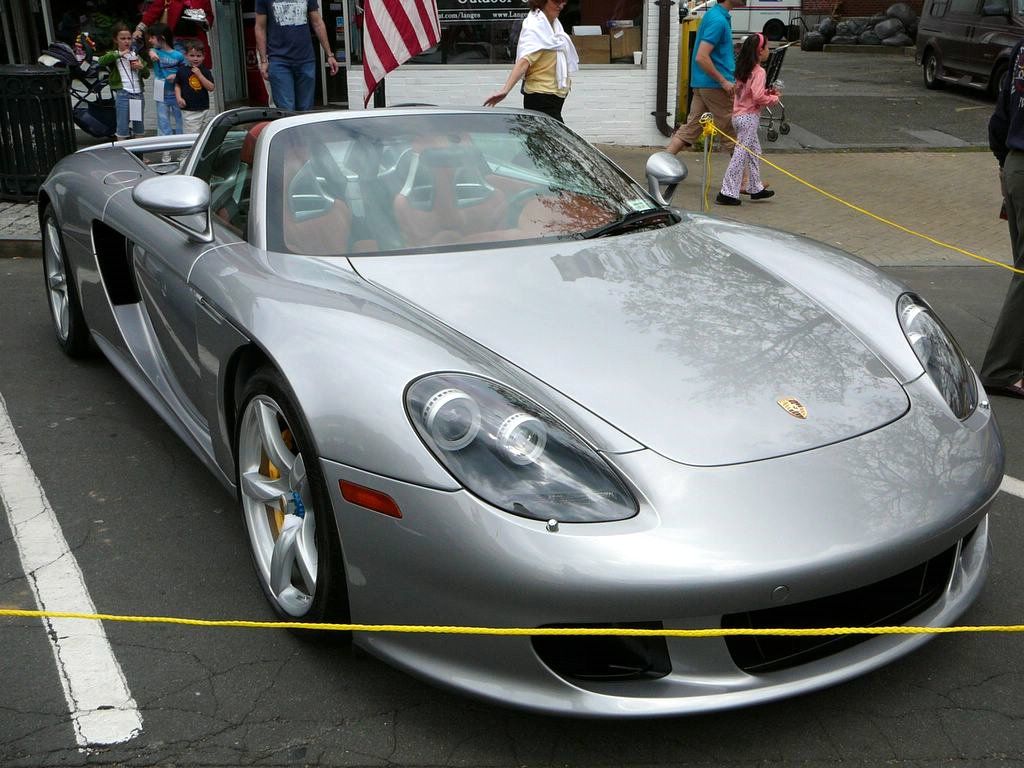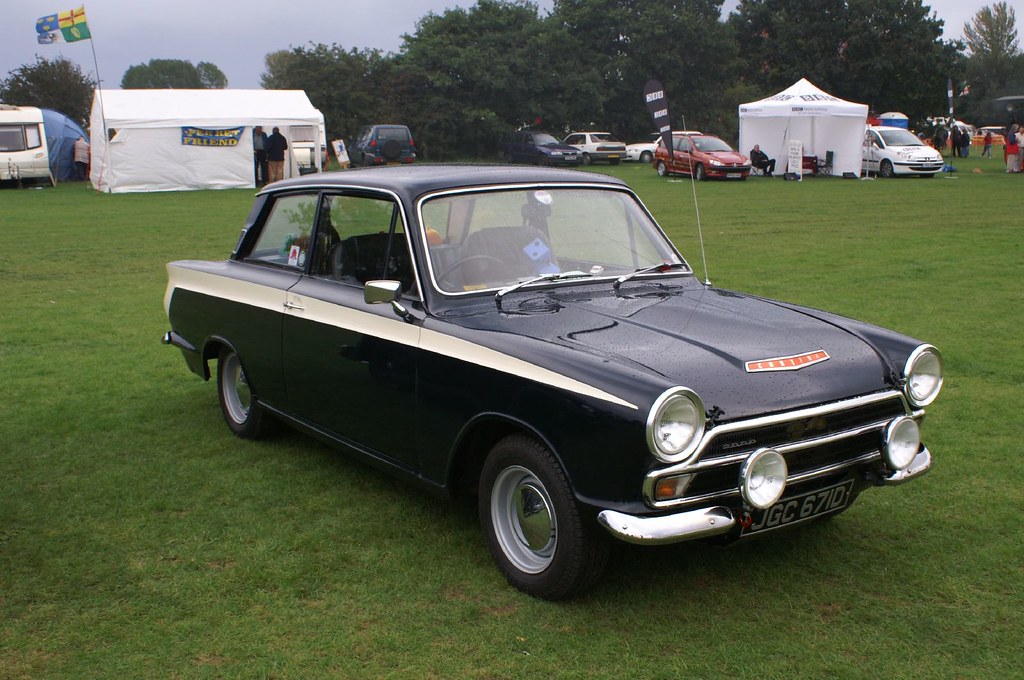
Classic cars have a timeless appeal, a certain romantic shimmer that pulls at the heartstrings of enthusiasts and collectors alike. They represent an era, a feeling, a tangible piece of automotive history that we all crave to experience. But let’s be brutally honest: not all classics are created equal. Beneath that shiny veneer and nostalgic glow often lurk some truly horrendous design flaws, lurking like gremlins ready to ruin your day, your wallet, and sometimes, even the car’s entire legacy.
Indeed, for every perfectly engineered icon, there’s another machine that, despite its potential, was hobbled by a fatal design misstep or a series of questionable choices that left owners scratching their heads and values plummeting. These aren’t just minor quirks; we’re talking about fundamental issues that transformed dream machines into automotive cautionary tales, vehicles that, despite their charm, never quite stood the test of time as icons of reliability or safety.
So, buckle up, gearheads! We’re about to take a deep dive, Jalopnik-style, into 14 classic cars that, for all their aspirations, were ultimately undone by their own design demons. These aren’t just forgotten relics; they’re fascinating case studies in engineering gone awry, proving that sometimes, even the most beloved marques can get it spectacularly wrong. Get ready for some unfiltered truth, because these are the vehicles that truly lost their way, and their value, all thanks to some truly dreadful decisions on the drawing board.
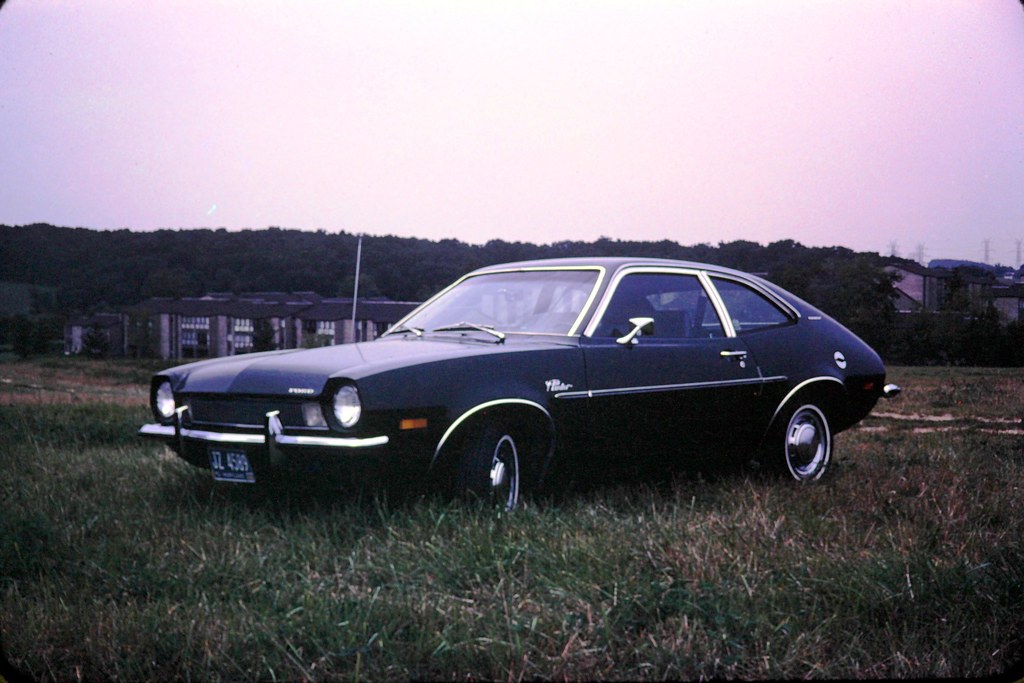
1. **Ford Pinto**Ah, the Ford Pinto. Few cars evoke such a visceral reaction, not for its performance or style, but for its utterly infamous fuel tank design. Produced from 1971 to 1980, this subcompact was meant to be Ford’s answer to the influx of economical foreign cars, but it quickly became a byword for corporate negligence and a stark reminder that sometimes, cost-cutting has deadly consequences.
Positioned precariously behind the rear axle, the Pinto’s fuel tank was susceptible to puncturing in even low-speed rear-end collisions. This wasn’t a hypothetical risk; it led to catastrophic fires and, tragically, numerous fatalities. The ensuing public outcry, fueled by high-profile lawsuits and damning internal documents, painted a picture of a company aware of the flaw but opting for a cost-benefit analysis that prioritized profit over human lives.
Ford’s initial reluctance to issue a full recall only deepened the scandal. When they finally did, it was for 1.5 million Pintos, and the damage to the car’s, and Ford’s, reputation was irreparable. The Pinto’s legacy remains forever overshadowed by its safety record, cementing its place in automotive history as a classic example of a design oversight with deadly consequences and a monumental lesson in how *not* to design a family car.
Car Model Information: 1980 Ford Pinto WAGON
Name: Ford Pinto
Caption: Ford Pinto
Manufacturer: Ford Motor Company
Aka: Mercury Bobcat
Production: September 1970 – July 1980
ModelYears: 1971–1980 (Pinto),1974–1980 (Bobcat)
Assembly: Edison, New Jersey,Milpitas, California
Designer: Robert Eidschun (1968)
Class: Subcompact car
BodyStyle: Sedan (automobile),sedan delivery,station wagon,hatchback
Related: #Mercury Bobcat (1974–1980),Ford Mustang (second generation)
Layout: Front-engine, rear-wheel-drive layout
Chassis: Unibody
Engine: unbulleted list
Abbr: on
Disp: Ford Cologne engine
Transmission: unbulleted list
Wheelbase: 94.0 in
Length: 163 in
Width: 69.4 in
Height: 50 in
Weight: convert
Predecessor: Ford Cortina#Mark II (1966–1970)
Successor: Ford Escort (North America)
Categories: 1980s cars, Articles with short description, Cars discontinued in 1980, Cars introduced in 1970, Commons category link from Wikidata
Summary: The Ford Pinto is a subcompact car that was manufactured and marketed by Ford Motor Company in North America from 1970 until 1980. The Pinto was the first subcompact vehicle produced by Ford in North America.
The Pinto was marketed in three body styles throughout its production: a two-door fastback sedan with a trunk, a three-door hatchback, and a two-door station wagon. Mercury offered rebadged versions of the Pinto as the Mercury Bobcat from 1975 until 1980 (1974–1980 in Canada). Over three million Pintos were produced over its ten-year production run, outproducing the combined totals of its domestic rivals, the Chevrolet Vega and the AMC Gremlin. The Pinto and Mercury Bobcat were produced at Edison Assembly in Edison, New Jersey, St. Thomas Assembly in Southwold, Ontario, and San Jose Assembly in Milpitas, California.
Since the 1970s, the safety reputation of the Pinto has generated controversy. Its fuel-tank design attracted both media and government scrutiny after several deadly fires occurred when the tanks ruptured in rear-end collisions. A subsequent analysis of the overall safety of the Pinto suggested it was comparable to other 1970s subcompact cars. The safety issues surrounding the Pinto and the subsequent response by Ford have been cited widely as business ethics and tort reform case studies.
Get more information about: Ford Pinto
Buying a high-performing used car >>>
Brand: Ford Model: Pinto
Price: $5,951 Mileage: 107,000 mi.
Read more about: Rev Up Your Restoration: The Ultimate Guide to the Best Free Online Forums for Classic Car Enthusiasts
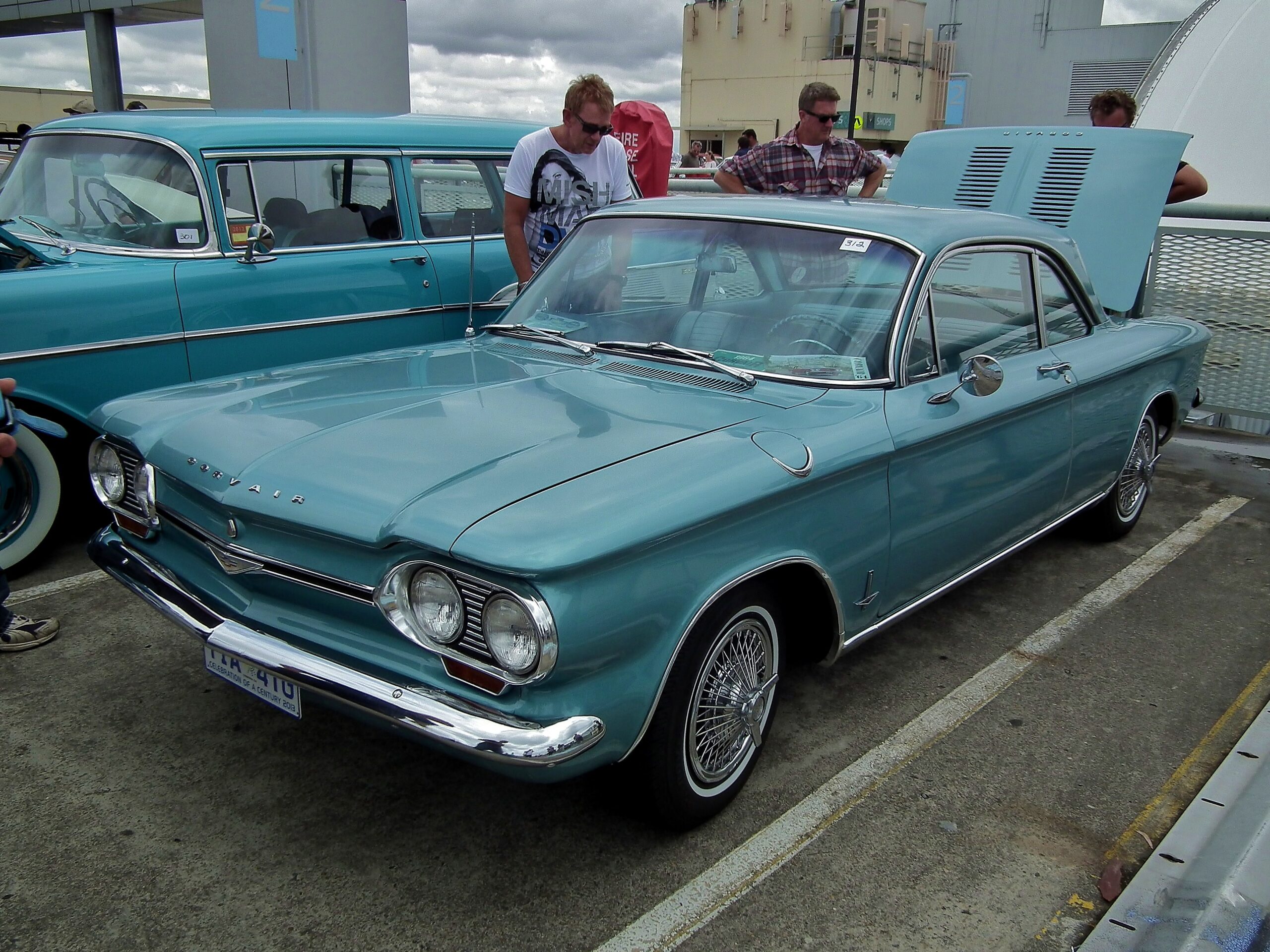
2. **Chevrolet Corvair**The Chevrolet Corvair, produced from 1960 to 1969, was a fascinating, if ultimately flawed, machine. It debuted with an innovative rear-engine, air-cooled layout, a bold departure for an American manufacturer aiming to compete with European imports like the Volkswagen Beetle. For a brief shining moment, it seemed like a fresh, modern take on American motoring.
However, the Corvair’s unconventional design quickly became its Achilles’ heel. It soon faced criticism for handling issues, particularly its propensity for sudden oversteer and, in extreme cases, rollovers. This wasn’t just idle chatter; it became the central focus of consumer advocate Ralph Nader’s groundbreaking (and industry-shaking) book, “Unsafe at Any Speed.”
Nader’s spotlight on the Corvair’s flaws ignited a public outcry, leading to a significant decline in sales and ultimately contributing to its downfall. Despite Chevrolet’s attempts to address these handling characteristics in later models with revised suspension, the car’s reputation as a dangerous vehicle persisted. The controversy surrounding the Corvair even played a pivotal role in the establishment of the National Highway Traffic Safety Administration (NHTSA), forever linking this ambitious design to a pivotal moment in automotive safety history.
Car Model Information: 1962 Chevrolet Corvair Monza 900
Caption: 1964 Chevrolet Corvair Monza
Name: Chevrolet Corvair
Manufacturer: Chevrolet
Production: July 1959
Platform: GM Z platform
Chassis: Unibody
ModelYears: 1960–1969
Assembly: United States,Kansas City, Missouri,Oakland, California,Van Nuys,St. Louis,Flint, Michigan,Belgium,Canada,Mexico,South Africa,Switzerland,Venezuela
Class: Compact car
Successor: Chevrolet Vega
Layout: Rear-engine, rear-wheel-drive layout
Categories: All Wikipedia articles written in American English, All articles lacking in-text citations, All articles needing additional references, All articles with dead external links, All articles with specifically marked weasel-worded phrases
Summary: The Chevrolet Corvair is a rear-engined, air-cooled compact car manufactured and marketed by Chevrolet over two generations from the 1960 through 1969 model years. The Corvair was a response to the increasing popularity of small, fuel-efficient automobiles, particularly the imported Volkswagen Beetle and American-built compacts like the Rambler American and Studebaker Lark.
The first generation (1960–1964) was offered in four-door sedan, two-door coupe, convertible, and four-door station wagon configurations. A two- and four-door hardtop, as well as a convertible, were available as second-generation variants (1965–1969). The Corvair platform was also offered as a subseries known as the Corvair 95 (1961–1965), which consisted of a passenger van, commercial van, and pickup truck variant. Total production was approximately 1.8 million vehicles from 1960 until 1969.
The name “Corvair” was first applied in 1954 to a Corvette-based concept with a hardtop fastback-styled roof, part of the Motorama traveling exhibition. When applied to the production models, the “air” part referenced the engine’s cooling system.
A prominent aspect of the Corvair’s legacy derives from controversy surrounding the handling of early models equipped with rear swing axles, articulated aggressively by Ralph Nader’s Unsafe at Any Speed but tempered by a 1972 Texas A&M University safety commission report for the National Highway Traffic Safety Administration (NHTSA) which found that the 1960–1963 Corvair possessed no greater potential for loss of control in extreme situations than contemporary compacts.
To better counter popular inexpensive subcompact competitors, notably the Beetle and Japanese imports such as the Datsun 510, GM replaced the Corvair with the more conventional Chevrolet Vega in 1970.
Get more information about: Chevrolet Corvair
Buying a high-performing used car >>>
Brand: Chevrolet Model: Corvair
Price: $8,950 Mileage: 0 mi.
Read more about: Navigating the Wild: The Best 2025 SUVs Packed with Off-Roading Prowess for American Adventurers
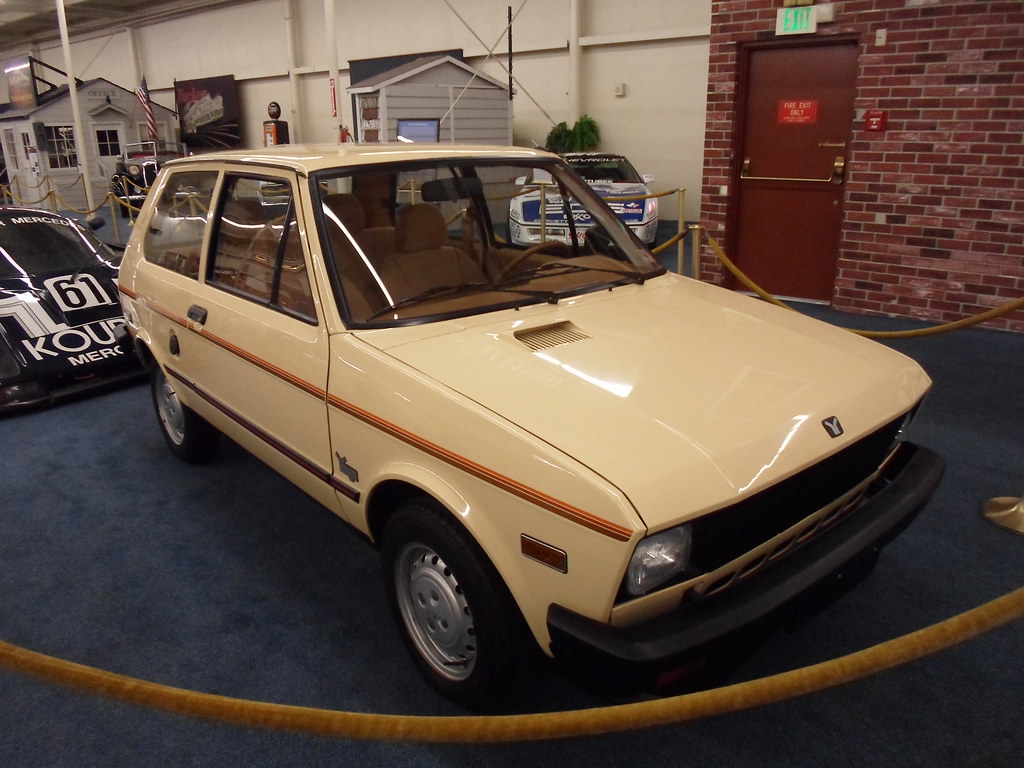
3. **Yugo GV**Oh, the Yugo GV. Imported to the United States from 1985 to 1992, this car arrived with a single, undeniable selling point: its price tag. It was, without a doubt, one of the cheapest new cars on the American market. For budget-conscious buyers, it seemed like an incredible deal – a brand new car for the cost of a moderately used one. What could possibly go wrong?
Well, as it turned out, quite a lot. The Yugo’s low price was tragically matched by an equally low standard of build quality and reliability. Engine failures were common, electrical issues were rampant, and the general flimsy construction made the Yugo a frequent subject of ridicule. It wasn’t just a car; it was a punchline, synonymous with automotive mediocrity.
Despite its affordability, the Yugo’s numerous mechanical problems and glaring safety issues utterly overshadowed its initial appeal. Its notoriety was cemented by its consistent performance at the absolute bottom of consumer satisfaction surveys, a testament to how profoundly a lack of engineering and production quality can devastate a vehicle’s reputation and ensure its place in the pantheon of automotive failures. It was cheap for a reason, and owners learned that lesson the hard way.
Read more about: Diesel Durability Unveiled: 10 Engines That Redefine Longevity — And Those That Don’t
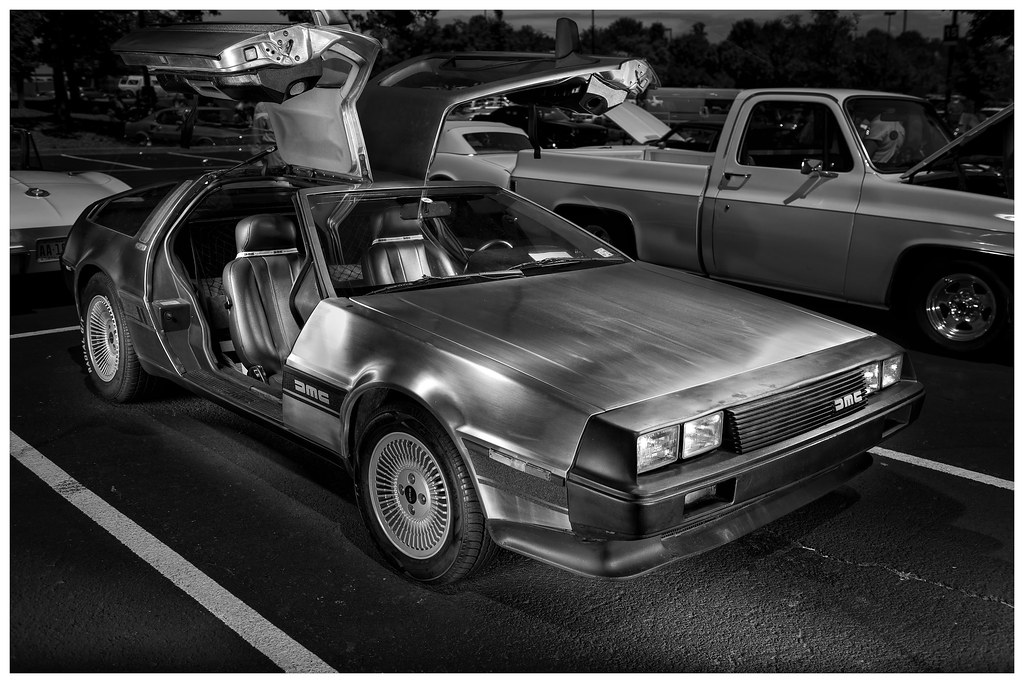
4. **DeLorean DMC-12**The DeLorean DMC-12, produced for a fleeting moment between 1981 and 1983, is a car instantly recognizable to anyone who’s ever seen a certain time-traveling movie. Its striking stainless steel body and iconic gull-wing doors promised a futuristic driving experience, a car seemingly beamed in from another dimension. It was, visually, a masterpiece of bold design.
However, beneath that undeniably cool exterior, the DMC-12 harbored a host of underlying issues that ultimately crippled its potential. For a car that looked like it could break the sound barrier, it was woefully underpowered, saddled with a modest V6 engine that struggled to deliver the performance its appearance so loudly proclaimed. Acceleration was sluggish, and the driving dynamics simply didn’t match the high expectations set by its radical aesthetic.
Compounding its performance shortcomings, the DeLorean’s build quality suffered from inconsistent production standards, a common pitfall for ambitious projects with limited resources. Financial difficulties faced by the DeLorean Motor Company further hindered efforts to rectify these issues, leading to the car’s short-lived production run. While it holds a special place in pop culture, as a *car*, its design flaws and execution prevented it from ever truly living up to its audacious looks, making it a high-concept, low-delivery legend.
Car Model Information: 1982 Delorean DMC-12
Name: DMC DeLorean
Alt: 1983 DeLorean
Caption: 1983 DeLorean
Manufacturer: DeLorean Motor Company
Production: January 21, 1981 – December 1982
ModelYears: 1981–1983
Assembly: Dunmurry
Designer: Giorgetto Giugiaro
Class: Sports car
BodyStyle: coupé
Layout: Rear-engine, rear-wheel-drive layout
Doors: Gull-wing doors
Engine: 2.85 L
Abbr: on
Powerout: 130 hp
Transmission: 5-speed manual ,3-speed automatic
Wheelbase: 2413 mm
Length: 4267 mm
Width: 1988 mm
Height: 1140 mm
Weight: 1233 kg
Sp: us
Categories: 1980s cars, All Wikipedia articles written in American English, Articles with short description, Automobiles with backbone chassis, Automobiles with gull-wing doors
Summary: The DMC DeLorean is a rear-engine, two-seat sports car manufactured and marketed by John DeLorean’s DeLorean Motor Company (DMC) for the American market from 1981 until 1983—ultimately the only car brought to market by the fledgling company. The DeLorean is sometimes referred to by its internal DMC pre-production designation, DMC-12, although this was not used in sales or marketing materials for the production model.
Designed by Giorgetto Giugiaro, the DeLorean is noted for its gull-wing doors and brushed stainless-steel outer body panels, as well as its lack of power and performance. Though its production was short-lived, the DeLorean became widely known after it was featured as the time machine in the Back to the Future films.
With the first production car completed on January 21, 1981, the design incorporated numerous minor revisions to the hood, wheels and interior before production ended in late December 1982, shortly after DMC filed for bankruptcy and after total production reached an estimated 9,000 units.
Despite the car having a reputation for poor build quality and an unsatisfactory driving experience, the DeLorean continues to have a strong following, driven in part by the popularity of Back to the Future. 6,500 DeLoreans were estimated to still be on the road as of 2015.
Get more information about: DMC DeLorean
Buying a high-performing used car >>>
Brand: DeLorean Model: DMC-12
Price: $129,950 Mileage: 3,145 mi.
Read more about: Instant Disappointment: 10 Sports Cars That Failed to Live Up to the Hype Off the Assembly Line.

5. **Triumph Stag**The Triumph Stag, produced from 1970 to 1978, was conceived with grand intentions: to be a luxurious, stylish sports car, a sophisticated grand tourer that combined British charm with open-air motoring. It certainly had the looks, with a distinctive T-bar roof and elegant lines, but its beauty was only skin deep, masking a truly problematic heart.
The vehicle was plagued by relentless mechanical problems, primarily centered around its innovative, yet tragically flawed, V8 engine. This bespoke engine suffered from chronic overheating issues, often leading to catastrophic failures like blown head gaskets. These problems were exacerbated by poor quality control and a distinct lack of engineering refinement that left owners frequently stranded and frustrated.
Despite its stylish design and comfortable interior, the Stag’s notorious reliability concerns led to a thoroughly tarnished reputation. Many owners found themselves locked in a constant battle with repairs, which ultimately contributed to the model’s early demise and severely limited its appeal to collectors seeking a dependable classic. It remains a testament to how a beautiful design can be utterly undermined by fundamental engineering shortcomings.
Read more about: Navigating the Wild: The Best 2025 SUVs Packed with Off-Roading Prowess for American Adventurers
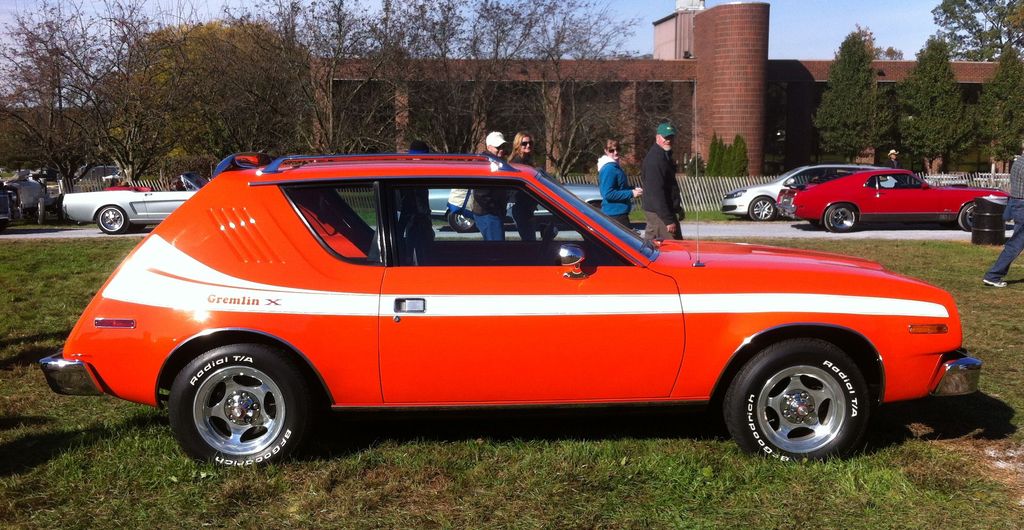
6. **AMC Gremlin**When the AMC Gremlin rolled out in 1970, it certainly made an impression – just perhaps not the one AMC intended. Introduced as a budget-friendly subcompact, its design was, to put it politely, unique. Featuring a sharply truncated rear end, it looked less like a conventional car and more like half a car, a styling choice that instantly polarized public opinion. You either loved it or, more commonly, you just didn’t get it.
But the Gremlin’s peculiar styling was only part of the story. Beneath that divisive exterior lay a car that suffered from a fundamental lack of refinement and distinctly mediocre build quality. The interior was cramped, the technology rudimentary, and the overall driving experience was far from inspiring. It felt exactly like what it was: a cheap, rushed attempt to capitalize on the booming subcompact market.
To add insult to injury, the Gremlin also contended with limited safety features and a susceptibility to rust that further marred its reputation. While it did offer an affordable entry into new car ownership, its design oddities and quality deficiencies made it a frequent target for criticism in the automotive community, ensuring its status as a classic whose design was more memorable for its awkwardness than its brilliance.
Read more about: Rev Up Your Restoration: The Ultimate Guide to the Best Free Online Forums for Classic Car Enthusiasts
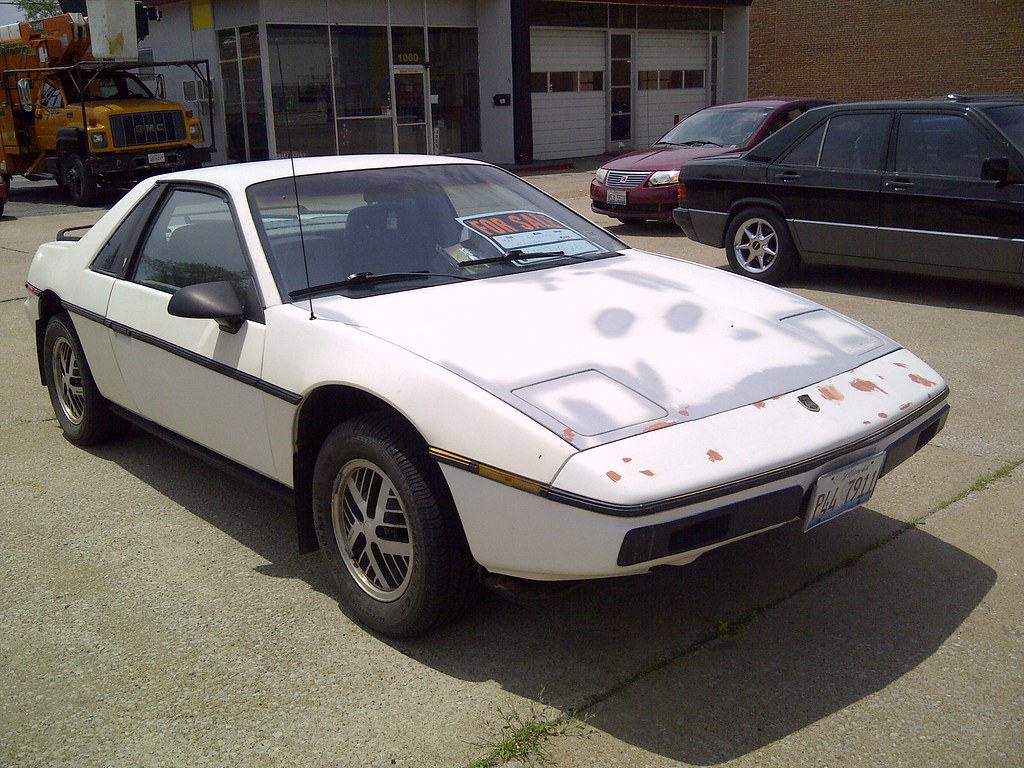
7. **Pontiac Fiero**The Pontiac Fiero, produced from 1984 to 1988, was an ambitious project with a clear goal: to deliver a mid-engine sports car experience at an affordable price point. This was groundbreaking stuff for an American manufacturer, and early models generated a lot of excitement with their sleek, futuristic looks and innovative layout. It promised exotic car thrills without the exotic car price tag.
However, the Fiero’s early years were plagued by reliability issues that quickly overshadowed its revolutionary design. Most notoriously, early models suffered from engine fires, often caused by defective connecting rods. This was a critical and dangerous flaw that quickly eroded public trust and led to a wave of negative press, turning a promising innovator into a symbol of potential danger.
Despite Pontiac’s efforts to address these problems and introduce significant improvements in later versions, the Fiero’s initial troubles left a lasting, negative impression. The combination of serious safety concerns and a fiercely competitive market environment ultimately led to its discontinuation. While it made a significant mark on the automotive landscape as a bold experiment, its critical early design flaws ensured it would be remembered as a car whose ambition far outstripped its initial execution.
Car Model Information: 1986 Pontiac Fiero
Name: Pontiac Fiero
Caption: 1988 Fiero Formula
Manufacturer: Pontiac (automobile)
Production: August 1983 – August 16, 1988,370,168 produced
ModelYears: 1984 – 1988
Successor: Pontiac Solstice
Assembly: Pontiac, Michigan
Designer: Hulki Aldikacti,George Milidrag
Class: Sports car
BodyStyle: fastback,notchback
Platform: GM P platform
Layout: Rear mid-engine, rear-wheel-drive layout
Engine: {{cvt,151,CID,L,1,disp=flip,Iron Duke engine#LR8,Inline-four engine
Transmission: Turbo-Hydramatic 125,Manual transmission,Getrag 282 transmission,Isuzu
Wheelbase: 2373 mm
Abbr: on
Length: 4072 mm
Width: 1750 mm
Height: 1191 mm
Weight: 1116 to
Categories: All articles with unsourced statements, Articles with short description, Articles with unsourced statements from February 2012, Articles with unsourced statements from July 2024, Articles with unsourced statements from October 2025
Summary: The Pontiac Fiero is a rear mid-engine, light sports car manufactured and marketed by Pontiac for model years 1984 – 1988. Intended as an economical commuter car with modest performance aspirations, it was Pontiac’s first two-seater since their 1926 to 1938 coupes, and the first mass-produced, rear mid-engine car by any American manufacturer.
In addition to using 4- and 6-cylinder engines to help Pontiac meet America’s ‘CAFE’ average fuel economy requirements, the Fiero’s chassis and structure technology used non-load-bearing, composite body-panels, contributing to the car’s light-weight and its unique selling proposition. Pontiac engineers modified the design over its life to enhance its performance and reposition the two-seater closer to the implications of its sporty configuration.
The Fiero 2M4 (two-seat, mid-engine, four-cylinder) placed on Car and Driver magazine’s Ten Best list for 1984, and was the Official Pace Car of the Indianapolis 500 for 1984.
A total of 370,168 Fieros were manufactured over five years’ production, its mild performance, reliability and safety issues becoming points of criticism. The Fiero was discontinued after annual sales fell steadily.
Get more information about: Pontiac Fiero
Buying a high-performing used car >>>
Brand: Pontiac Model: Fiero
Price: $14,999 Mileage: 68,582 mi.
Read more about: Unearthing Gems: 15 Undervalued 1980s Sports Cars That Are Smart Buys for Collectors Today
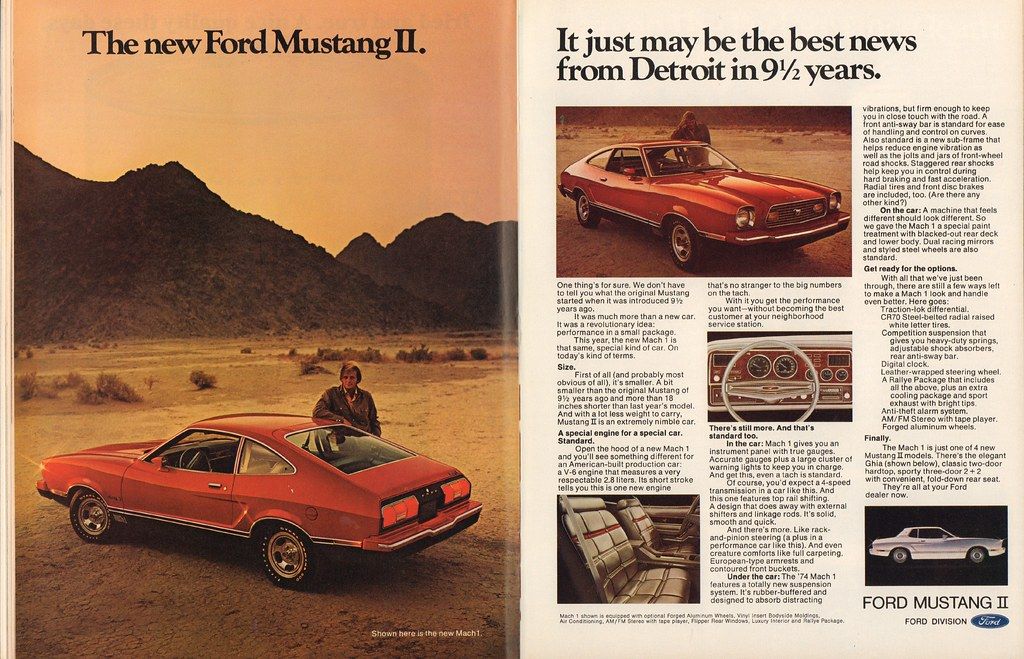
8. **1974 Ford Mustang II**Oh, the Mustang II. After the glory days of the original Pony Car, 1974 brought us this significantly downsized model, a direct response to the era’s fuel crisis. Ford tried to pivot towards economy, shedding the muscle-bound excess of its predecessors. But what we got was a far cry from the roaring power and raw charisma that had defined the Mustang lineage. It was smaller, lighter, and frankly, a bit lost in its own identity, struggling to connect with an audience that craved the older, brawnier iterations.
Under the hood, the situation didn’t improve for muscle car purists; in fact, it arguably regressed. With engine options like a rather meek 2.3-liter inline-four, generating a paltry 88 horsepower, this Mustang struggled to even whisper “muscle,” let alone deliver the kind of visceral experience expected from its iconic badge. Even the optional V8 offered little to ignite the passions of true performance enthusiasts, making many drivers feel profoundly underwhelmed and wondering where the pony car spirit had vanished.
Adding to its woes, the Mustang II’s construction relied heavily on plastic in various components, a choice that immediately sparked durability concerns. This decision, aimed at cost-saving and weight reduction, ultimately contributed to the model’s less-than-stellar reputation for longevity. It’s no wonder that you don’t see many of these cruising around today, as this particular iteration is frequently cited as a low point in the legendary Mustang saga, a potent reminder that practicality can sometimes dilute the very essence that made a car legendary.
Car Model Information: 2021 Ford F-150 XLT
Name: Second generation
Caption: Ford Mustang II coupe
Aka: Ford Mustang II , Ford T5 (in Germany)
Class: Pony car,Subcompact car
Production: 1973–1978
ModelYears: 1974–1978
Predecessor: Ford Mustang (first generation)
Successor: Ford Mustang (third generation)
Assembly: Unbulleted list
Layout: Front-engine, rear-wheel-drive layout
BodyStyle: coupé,hatchback
Related: Ford Pinto,Ford Pinto
Manufacturer: Ford Motor Company
Engine: ubl
Transmission: ubl
Wheelbase: cvt
Length: cvt
Width: cvt
Height: cvt
Designer: Buck Mook, Dick Nesbitt
Categories: All articles with dead external links, All articles with unsourced statements, Articles with dead external links from April 2024, Articles with permanently dead external links, Articles with short description
Summary: The second-generation Ford Mustang, marketed as the Ford Mustang II, is a pony car which was manufactured and marketed by Ford from 1973 until 1978. It has a front-engine, rear-wheel-drive layout with seating for four passengers and either a two-door coupé or three-door hatchback body. Introduced in September 1973 for the 1974 model year, the Mustang II arrived roughly coincident with the oil embargo of 1973 and subsequent fuel shortages. Developed under Lee Iacocca, it was an “entirely new kind of pony car.” Ford “decided to call it Mustang II, since it was a new type of pony car designed for an era of high gas prices and fuel shortages.”
The Mustang II was 490 lb (222 kg) lighter and almost 19 in (483 mm) shorter than the 1973 Mustang, and derived from the subcompact Pinto platform. While sharing a limited number of driveline components with the Pinto, the Mustang II employed an exclusive subframe, isolating its front suspension and engine mount subframe. The steering used a rack-and-pinion design.
Named Motor Trend’s 1974 Car of the Year and reaching over 1.1 million sales over four years of production, the Mustang II is noted simultaneously for both its marketing prescience and strong sales – while criticized as having abandoned essential aspects of the Mustang heritage and described, in a retrospective after 40 years since its introduction, as embodying the Malaise era.
Get more information about: Ford Mustang (second generation)
Buying a high-performing used car >>>
Brand: Ford Model: Mustang II
Price: $31,688 Mileage: 46,668 mi.
Read more about: Rev Up Your Restoration: The Ultimate Guide to the Best Free Online Forums for Classic Car Enthusiasts
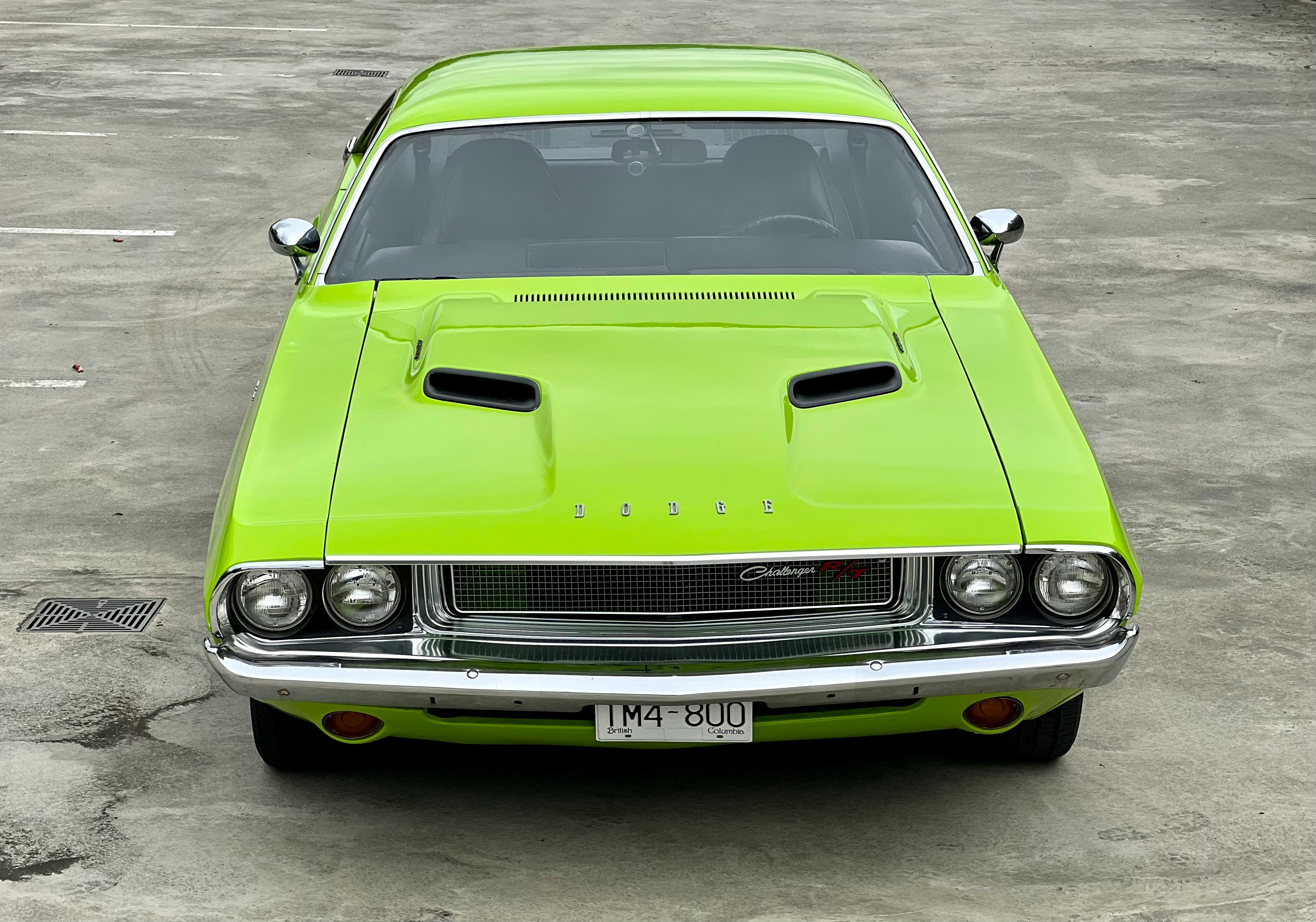
9. **1978 Dodge Challenger**The late ’70s were a rough patch for muscle cars, and the 1978 Dodge Challenger stands as a stark, unfortunate testament to that era. By this point, the nameplate, once synonymous with aggressive styling and raw power, had shed almost all of its original, thrilling charm. What we were left with was a shadow of its former self, a bloated and uninspired coupe struggling desperately to find its place in a changing automotive landscape, and frankly, failing.
The engine options available for the ’78 Challenger perfectly encapsulated its decline into mediocrity. We’re talking about a meager 150-hp V6 that felt utterly out of place in a car bearing such an iconic name. This severely limited power output, combined with the Challenger’s rather massive, ungainly body, meant that any hope of thrilling speed or agile handling was effectively crushed under its own weight. It lumbered more than it leaped, delivering a truly frustrating driving experience for anyone who had ever yearned for classic muscle car prowess.
Beyond the performance anemia, the design choices for this Challenger seemed fundamentally misguided. Instead of the aggressive, potent stance that enthusiasts adored, it leaned into a more mundane, less distinctive, and frankly, forgettable look. It strayed so profoundly from the muscle car spirit that many loved, leaving behind a lingering question: what could have been if Dodge had stayed true to the Challenger’s roots instead of delivering such an uninspired, value-killing iteration?
Car Model Information: 2023 Dodge Challenger R/T Scat Pack
Name: Dodge Challenger
Production: 1969–1974,1977–1983,2008–2023
ModelYears: 1970–1974,1978–1983,2008–2023
Caption: 2015 Dodge Challenger SRT Hellcat
Manufacturer: Dodge
Categories: 1970s cars, 1980s cars, 2000s cars, 2010s cars, 2020s cars
Summary: The Dodge Challenger is the name of three generations of automobiles produced by the American automobile manufacturer Dodge. However, the first use of the Challenger name by Dodge dates back to 1959 for marketing a “value version” of the full-sized Coronet Silver Challenger.
From model years 1970 to 1974, the first-generation Dodge Challenger pony car was built using the Chrysler E platform in hardtop and convertible body styles sharing significant components with the Plymouth Barracuda.
The second generation, from model years 1978 to 1983, was a rebadged Mitsubishi Galant Lambda / Sapporo, a coupe version of an economical compact car.
The third and most recent generation is a full-size muscle car that was introduced in early 2008 initially as a rival to the evolved fifth generation Ford Mustang and the fifth generation Chevrolet Camaro.
In November 2021, Stellantis announced that the 2023 model year would be the final model year for both the LD Dodge Charger and LA Dodge Challenger, as the company will focus its plans on electric vehicles rather than fossil fuel-powered vehicles, due to tougher emissions standards required by the Environmental Protection Agency for the 2023 model year. Challenger production ended on December 22, 2023, and the Brampton, Ontario, assembly plant will be re-tooled to assemble an electrified successor.
Get more information about: Dodge Challenger
Buying a high-performing used car >>>
Brand: Dodge Model: Challenger
Price: $38,955 Mileage: 27,425 mi.
Read more about: Rev Up Your Restoration: The Ultimate Guide to the Best Free Online Forums for Classic Car Enthusiasts
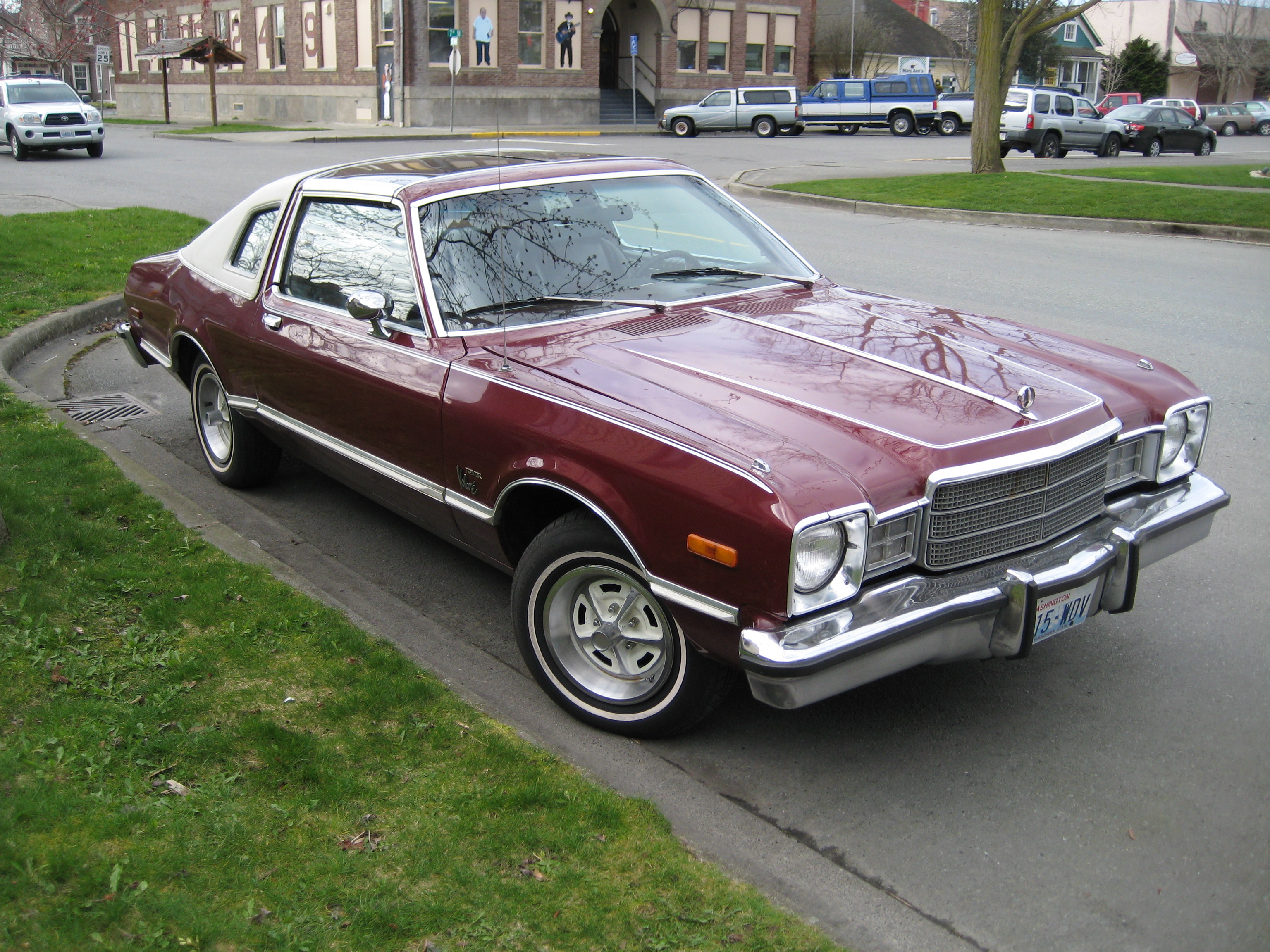
10. **1976 Plymouth Volare Road Runner**Bearing the revered “Road Runner” name, a moniker that once promised speed and aggression, the 1976 Plymouth Volare Road Runner carried immense expectations. Unfortunately, it didn’t just stumble; it crashed and burned under the relentless burden of significant design flaws and profoundly questionable engineering choices. While it might have superficially looked the part, beneath the surface, it was a profound disappointment for anyone hoping for a true, unadulterated muscle car experience.
One of its most crippling issues was a heavy, somewhat ponderous frame that severely impacted its performance capabilities. A muscle car is supposed to be quick and responsive, but the Volare Road Runner often felt sluggish, cumbersome, and frankly, out of breath. And while it theoretically offered a range of engines, the truly powerful options were frustratingly difficult to find, leaving many enthusiasts stuck with choices like the 318ci V8, which simply lacked the visceral punch expected from a vehicle wearing the legendary “Road Runner” badge.
To compound these performance shortcomings, the Volare was widely criticized for its overall poor build quality and a seemingly endless stream of reliability issues. Owners frequently grappled with problems such as pervasive rust, which compromised both aesthetics and structural integrity, and woefully inadequate brakes that did little to inspire confidence when it mattered most on the road. It was a classic case of an iconic nameplate being slapped onto a fundamentally flawed machine, ensuring its ignominious place in history.
Car Model Information: 2021 Ford F-150 XLT
Name: Plymouth Road Runner
Assembly: Detroit,Michigan
Manufacturer: Plymouth (automobile)
Class: Mid-size car
Production: 1968–1980
Related: unbulleted list
Layout: FR layout
Categories: 1970s cars, 1980s cars, All articles needing additional references, All articles with peacock terms, All articles with unsourced statements
Summary: The Plymouth Road Runner is a muscle car introduced by Chrysler in the United States for the 1968 model year and marketed under its Plymouth brand. Initially based on the Belvedere, the brand’s basic mid-size model, the Road Runner combined a powerful engine with a spartan trim level and a price that undercut increasingly upscale and expensive muscle cars such as the Pontiac GTO and Plymouth’s own GTX. It was initially a sales success.
The Road Runner was built in three generations on the mid-size B platform. Like most muscle cars, its performance and sales declined in the 1970s due to an increasing focus on fuel economy and the adoption of more stringent U.S. emission standards. The nameplate became to a trim package for the compact Plymouth Volaré for model year 1976—no longer offering any special performance capability—and was discontinued in 1980.
Get more information about: Plymouth Road Runner
Buying a high-performing used car >>>
Brand: Plymouth Model: Volare Road Runner
Price: $31,688 Mileage: 46,668 mi.
Read more about: Goodbye, Boomer Icons? 14 Classic Cars Millennials Just Aren’t Revving Up For
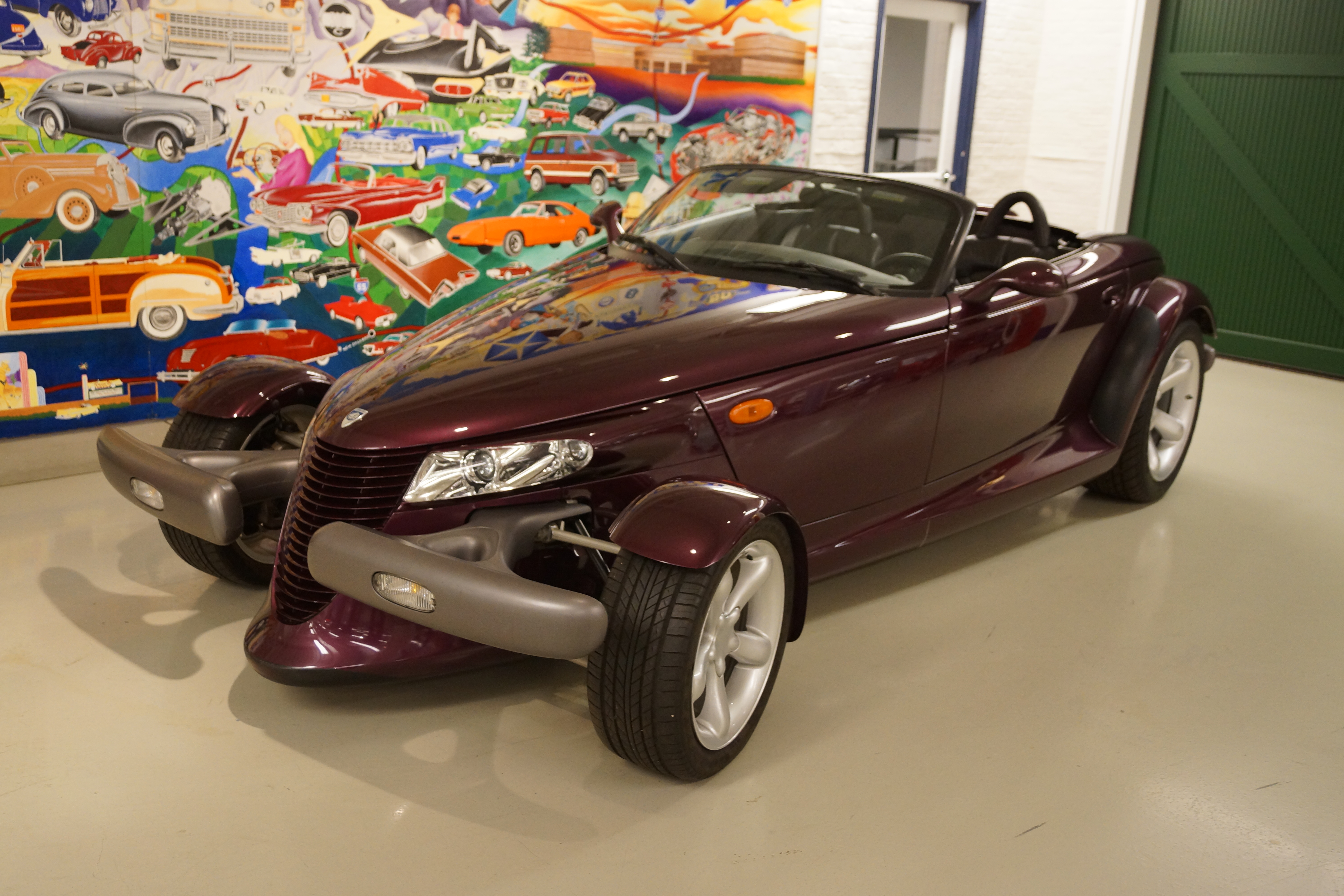
11. **1997 Plymouth Prowler**The 1997 Plymouth Prowler burst onto the scene with an unmistakable mission: to resurrect the classic hot rod aesthetic for a new generation. Its design was truly unique, a striking, almost audacious blend of retro cool and futuristic vision, with its exposed front wheels, sculpted fenders, and dramatically low-slung body. It was a guaranteed head-turner, a bold statement on wheels that commanded attention and started conversations wherever it rolled. Visually, it was a triumph, a piece of automotive art.
However, beneath that breathtaking, eye-catching exterior, the Prowler harbored a rather significant Achilles’ heel that puzzled many performance enthusiasts: its engine choice. Despite its aggressive hot rod looks, promising blistering speed and raw power, it was powered by a 3.5-liter V6 engine, producing 253 horsepower. While respectable on paper, this output left many wanting more, particularly when compared to the potent V8s that powered other muscle cars of its time. It looked like it should fly, but it often felt more like a spirited cruise than a pavement-shredding beast.
The Prowler’s hefty price tag, hovering around $45,000 when new, further amplified the disappointment for many who expected performance to unequivocally match its audacious styling and substantial cost. This stark disparity between its incredible visual appeal and its somewhat underwhelming, V6-only power, coupled with its inherent impracticality as a daily driver, left a significant segment of the market scratching their heads. The feeling was that the “hot rod” part of its identity was mostly skin deep, a design exercise rather than a performance monster.
While it has since found a passionate niche among collectors who appreciate its unique artistry and bold aesthetic gamble, its design choices were a risk that didn’t fully pay off in the raw performance department for the broader enthusiast community. The Prowler stands as a fascinating case study in prioritizing form over function, a beautiful sculpture that perhaps needed just a little more grunt to truly live up to its hot rod aspirations.
Car Model Information: 1997 Plymouth Prowler Roadster
Name: Plymouth Prowler
Manufacturer: Chrysler Corporation
Production: 1997–2002,11,702 produced
Assembly: Detroit, Michigan
Class: Sports car
Layout: Front-engine, rear-wheel-drive layout#Front mid-engine, rear-wheel-drive layout
Platform: Chrysler PR platform
BodyStyle: Roadster (automobile)
Engine: Chrysler SOHC V6 engine#3.5,V6 engine
Transmission: Ultradrive#A606/42LE,automatic transmission
Aka: Chrysler Prowler (2000–2002)
Wheelbase: cvt
Length: cvt
Width: cvt
Height: cvt
Weight: cvt
Successor: Chrysler Crossfire
Designer: Tom Gale (designer)
Caption: 2000 Plymouth Prowler
Categories: 2000s cars, All articles needing additional references, Articles needing additional references from November 2015, Articles with short description, Cars introduced in 1997
Summary: The Plymouth Prowler, later the Chrysler Prowler, is a two-door, two-seat sports car, manufactured and marketed by DaimlerChrysler for model years 1997 through 2002. It is widely known for its hand-crafted aluminum bodywork and its retro-hot rod styling with open, Indy racer-style front wheels.
Based on the 1993 concept car of the same name, Chrysler offered the Prowler over a single generation, with a V6 front-engine, and a rear-transaxle, rear-drive configuration. Total production was 11,702 Plymouth- and Chrysler-branded Prowlers.
Get more information about: Plymouth Prowler
Buying a high-performing used car >>>
Brand: Plymouth Model: Prowler
Price: $34,998 Mileage: 3,142 mi.
Read more about: Mastering Metal: 12 Vintage Vehicles Worth the Full Restoration Journey for Every Enthusiast
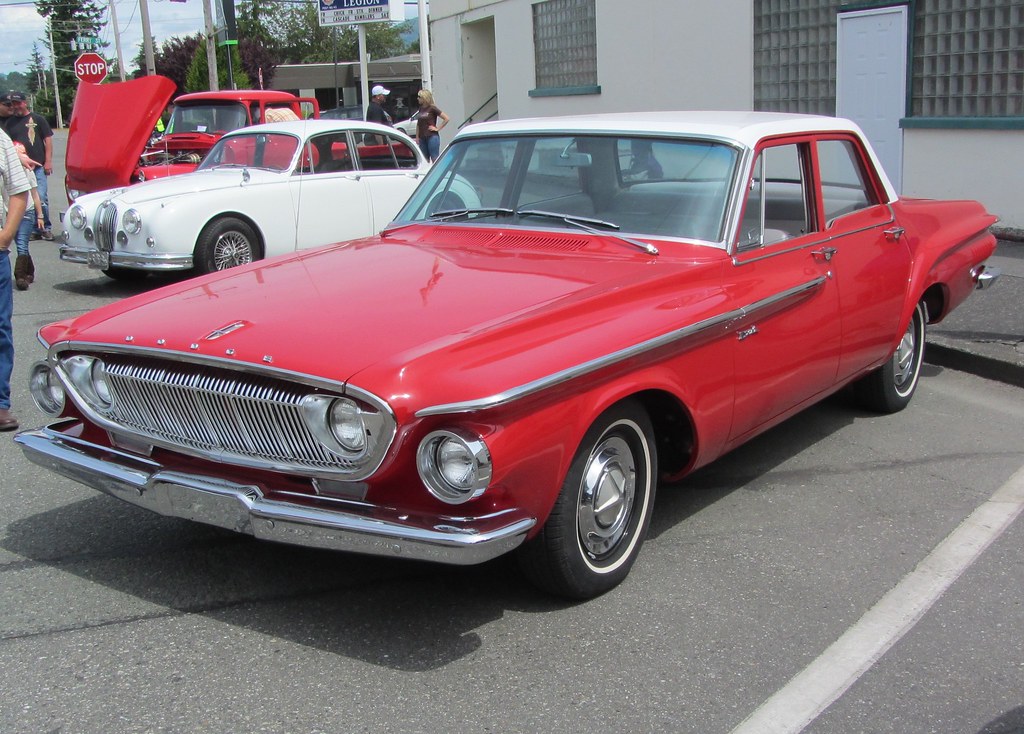
12. **1962 Dodge Dart**The 1962 Dodge Dart, in its own ambitious way, aimed to be a true game-changer, setting out to redefine its segment with a bold and distinctively unconventional design. It certainly made an effort to carve its own niche in a market that was increasingly embracing more conservative aesthetics. However, despite its forward-thinking aspirations and attempt at standing out, many discerning buyers and automotive critics ultimately found its overall quality and execution to be, shall we say, significantly lacking, hindering its long-term appeal.
Under the hood, things could get genuinely interesting, though. You could indeed find the Dart equipped with the formidable 413ci Max Wedge V-8 engine. This particular powertrain setup was genuinely impressive, reportedly pushing out a robust 420 horsepower and achieving thrilling quarter-mile times in the 13-second range. So, while the Dart might have stumbled in some other critical areas, it definitely packed a serious punch for those lucky enough to find and equip it with the right performance-oriented heart.
But even with the potential for serious, drag-strip-ready performance, the 1962 Dart ultimately struggled to gain significant traction in the crowded and intensely competitive automotive market. Buyers, perhaps swayed by its perceived quality control issues, its sometimes polarizing styling, or simply gravitating towards more established and consistently reliable options, didn’t embrace it in the numbers Dodge had so optimistically hoped for. It remains a fascinating footnote, a car that promised much and delivered in bursts, but ultimately couldn’t escape the shadow of its own inconsistent execution.
Car Model Information: 2015 Dodge Dart SXT
Name: Dodge Dart
Caption: 1966 Dodge Dart GT 2-door hardtop
Manufacturer: Dodge
Production: 1959–1976 (US market)
ModelYears: 1960–1976 (US market)
Class: Full-size
Layout: FR layout
Predecessor: Dodge Coronet#Fourth generation (1957–1959)
Related: Plymouth Valiant,Chrysler Valiant,Dodge Phoenix
Successor: Dodge Aspen,Dodge Diplomat,Talbot Tagora
Categories: 1970s cars, All articles with unsourced statements, Articles with short description, Articles with unsourced statements from December 2023, Articles with unsourced statements from May 2025
Summary: The Dodge Dart is a line of passenger cars produced by Dodge from the 1959 to 1976 model years in North America, with production extended to later years in various other markets.
The production Dodge Dart was introduced as a lower-priced full-size model in 1960 and 1961, but became a mid-size car for one model year for 1962, and was then reduced to a compact for two generations, from 1963 to 1976.
Chrysler had first used ‘Dart’ name plates on two Italian styled show cars, in 1956 and 1957, before it became a Dodge model name. The Dart nameplate was resurrected for a Fiat-derived compact car that was introduced in 2012.
Get more information about: Dodge Dart
Buying a high-performing used car >>>
Brand: Dodge Model: Dart
Price: $9,995 Mileage: 143,082 mi.
Read more about: Parking Lot Purgatory: 14 Vehicles Owners Deeply Regret After Years of Ownership
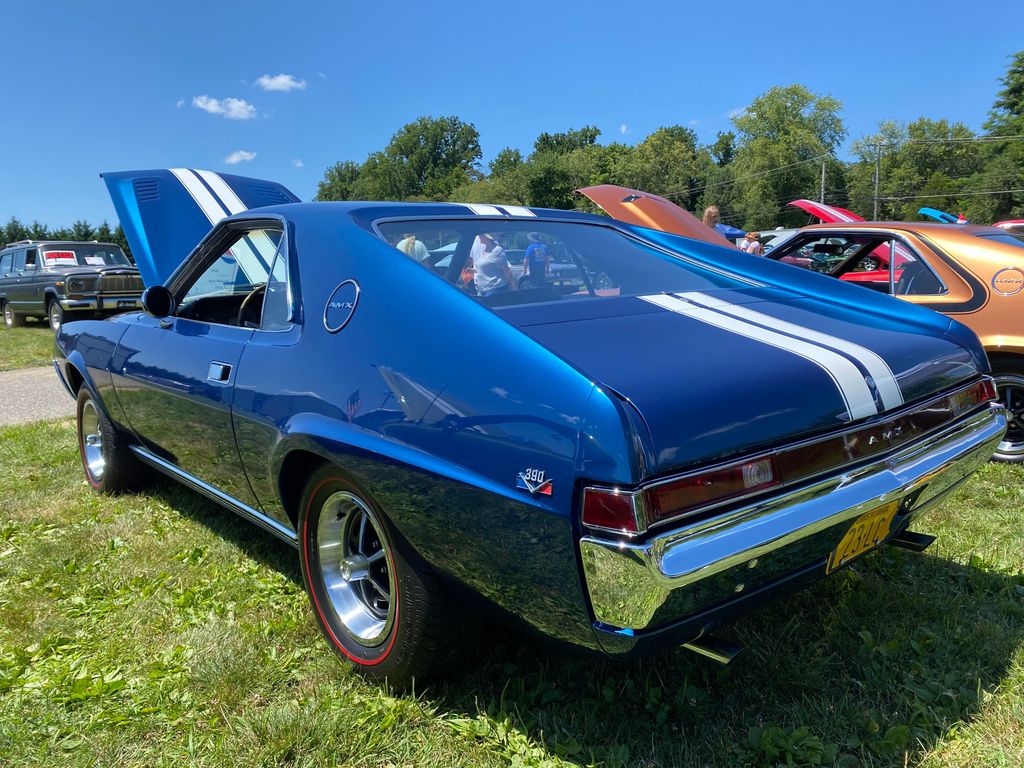
13. **AMC AMX with Rust Issues**The AMC AMX, a compelling two-seater muscle car, holds a unique and often overlooked place in automotive history. However, much like a frustratingly large number of vehicles from the 1970s, it grappled with a particularly insidious enemy that severely compromised its longevity and appeal: rust. This wasn’t just a minor cosmetic annoyance; it was a fundamental design oversight that revealed a distinct lack of foresight in its construction, relentlessly undermining the vehicle’s long-term integrity and value.
The core issue stemmed directly from the design itself, which seemingly failed to adequately account for proper drainage in key areas. This critical oversight led to water accumulation in various critical, problematic zones, creating absolutely ideal conditions for corrosion to vigorously take hold and spread. Owners frequently reported significant, often alarming, rust formation around the wheel wells and, perhaps even more concerningly, along the undercarriage – the very structural foundation of the car, where integrity is paramount.
For those enthusiasts residing in regions where roads are routinely salted during winter, this flaw was particularly alarming and detrimental. Rust, as any seasoned gearhead knows, doesn’t just eat away at paint and chrome; it actively compromises the structural integrity of a vehicle, leading to expensive, complex, and often heartbreaking repairs. So, if you’re ever eyeing an AMC AMX, a thorough and meticulous inspection for rust is an absolute necessity to avoid unforeseen headaches and prohibitive costs.
Read more about: Recall These? The Ultimate Showdown: 12 Coupes That Went From Hot to Humiliating in the Great American vs. European Car Wars
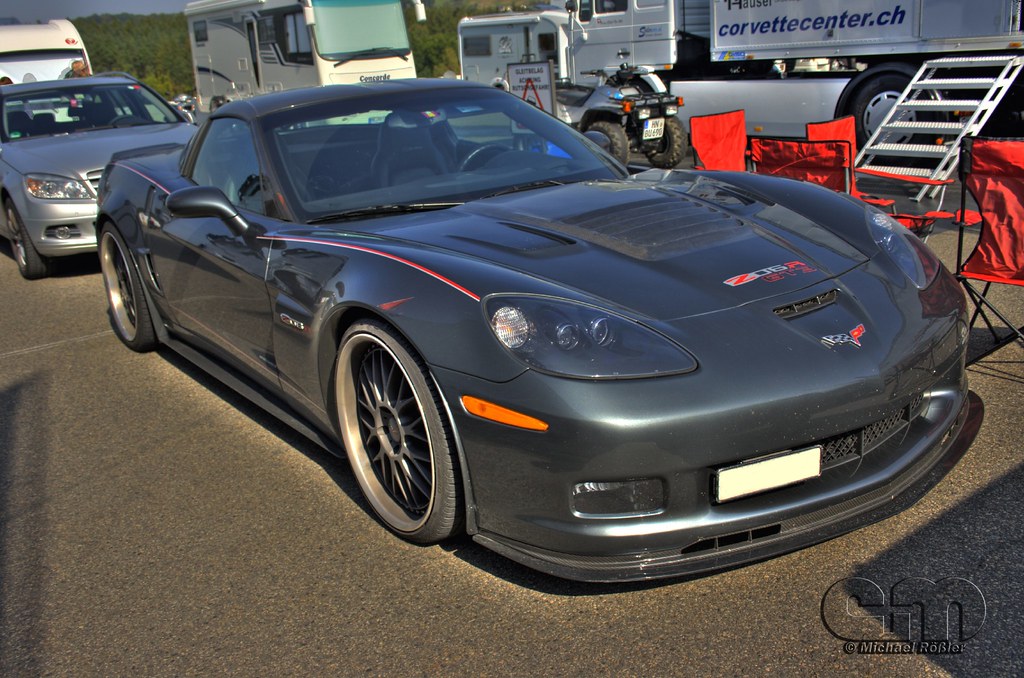
14. **1997 Chevrolet C5 Corvette**The 1997 Chevrolet C5 Corvette represented a monumental leap forward for America’s quintessential sports car. It wasn’t just a redesign; it was a wholesale re-imagining, heralding a significant shift in both design philosophy and performance capabilities. Arriving with a sleeker, more contemporary exterior and a vastly improved chassis, it felt utterly fresh, a bold statement that the Corvette was back and ready to take on the world, shedding the lingering baggage of previous generations.
Under the hood, it boasted a formidable new LS1 5.7-liter V8 engine, confidently churning out 345 horsepower and redefining the Corvette experience with impressive torque and a willingness to rev. This was a powerplant that delivered genuine, accessible performance, ensuring the C5 could hold its own against its European rivals and delight drivers with its raw, American grunt. It was truly a car built for open roads and spirited driving, living up to the promise of its striking looks.
However, even groundbreaking vehicles have their inevitable quirks, and the C5, for all its brilliance, was no exception. Some owners reported lingering problems with initial build quality, and the widespread use of certain low-grade interior materials occasionally detracted from the otherwise premium, sophisticated feel the C5 aimed for. Furthermore, the brakes, while functional, were a common point of contention among more aggressive drivers, often cited for their perceived lack of ultimate performance when pushed to their limits in track situations.
Despite these minor grievances and early production hiccups, the C5 Corvette has cultivated a fiercely loyal following that cherishes its bold, enduring design, the advanced technology it brought for its era, and its pivotal role in the ongoing evolution of an American icon. It’s a compelling testament that even with a few initial stumbles, a strong vision, genuine innovation, and undeniable passion can carve out a legend, securing its place as a valued classic that reshaped expectations for generations to come.
Car Model Information: 2021 Ford F-150 XLT
Name: Chevrolet Corvette (C5)
Manufacturer: Chevrolet
Production: October 1, 1996 – July 2, 2004
ModelYears: 1997–2004
Assembly: Bowling Green, Kentucky
Designer: John Cafaro (1993)
Predecessor: Chevrolet Corvette (C4)
Successor: Chevrolet Corvette (C6)
Class: Sports car
BodyStyle: coupé,Convertible (car),hardtop
Layout: Front-engine, rear-wheel-drive layout#FMR
Platform: GM Y platform
Engine: General Motors LS-based small-block engine#LS1,General Motors LS-based small-block engine#LS6
Transmission: Manual transmission,Automatic transmission
Wheelbase: cvt
Length: cvt
Width: cvt
Height: {{cvt,47.7,in,mm,0
Weight: {{cvt,1472,kg,lb,0
Related: Callaway C12
Categories: 2000s cars, All articles with unsourced statements, Articles with short description, Articles with unsourced statements from August 2024, Articles with unsourced statements from March 2019
Summary: The Chevrolet Corvette (C5) is the fifth generation of the Corvette sports car, produced by the Chevrolet division of General Motors for the 1997 through 2004 model years. Production variants include the high performance Z06. Racing variants include the C5-R, a 24 Hours of Daytona and 24 Hours of Le Mans GTS/GT1 winner. The C5 Corvette was the first GM vehicle to feature the third generation small block “LS” engines. This was the last generation Corvette with Pop-up headlights.
Get more information about: Chevrolet Corvette (C5)
Buying a high-performing used car >>>
Brand: Chevrolet Model: C5 Corvette
Price: $31,688 Mileage: 46,668 mi.
Read more about: Inside Eddie Van Halen’s Dream Garage: 15 Iconic Cars Owned by the Rock Legend
So there you have it, a candid, no-holds-barred look at some of the classic cars that, despite their undeniable charm and historical significance, were undeniably hobbled by design choices that ranged from perplexing to downright dangerous. These aren’t just old machines; they are crucial lessons etched in steel and chrome, demonstrating that even the most ambitious automotive dreams can be tripped up by a single oversight on the drawing board. For every sleek line and powerful engine, there’s a cautionary tale of a flaw that undermined its potential, making them not just cars, but captivating stories of ambition, miscalculation, and the enduring passion that keeps their wheels, flaws and all, still turning in our collective automotive imagination. What a ride, huh?


